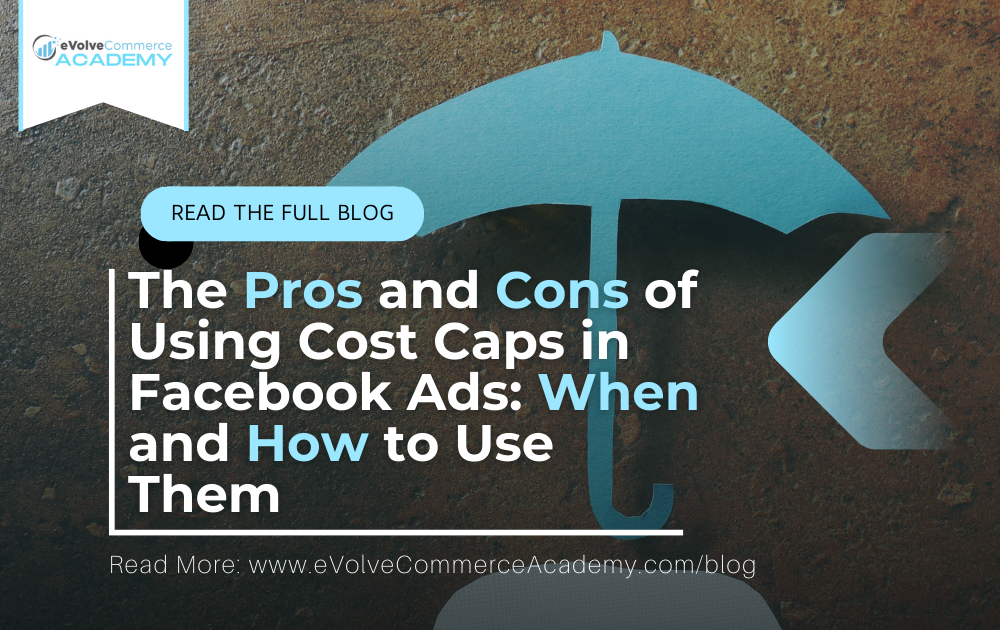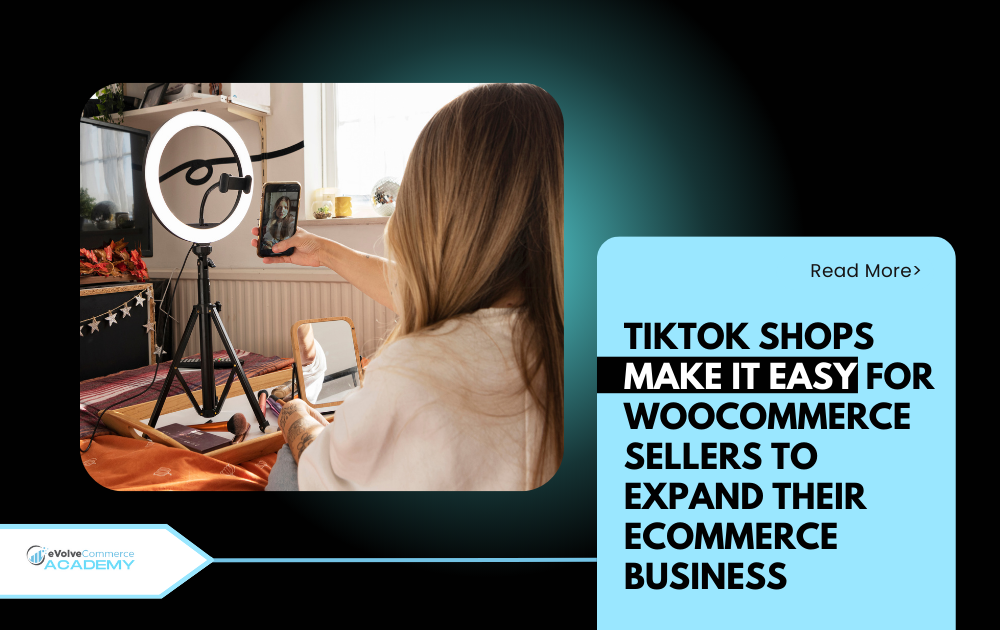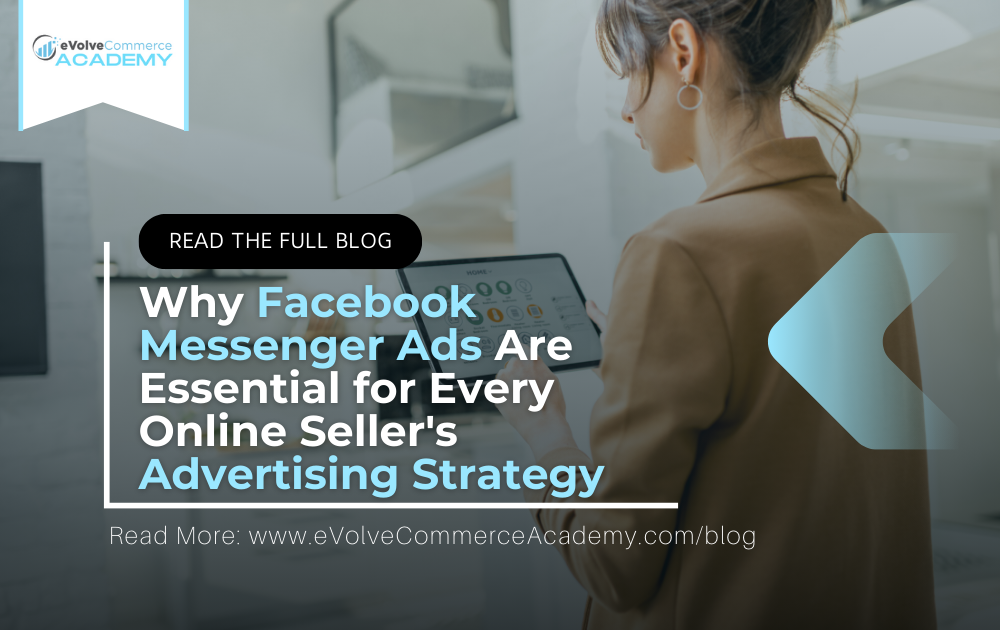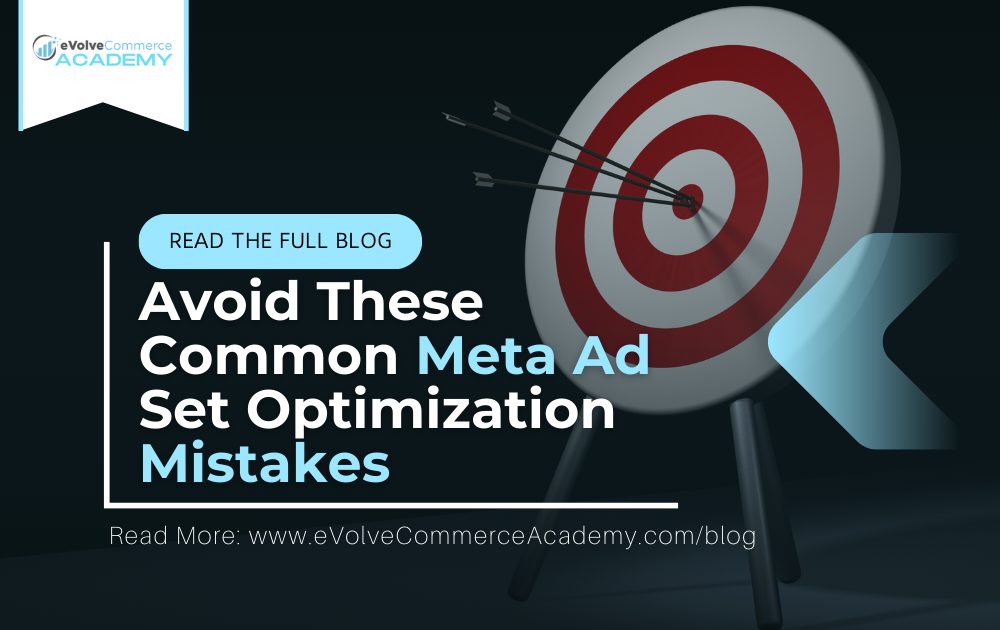The Pros and Cons of Using Cost Caps in Facebook Ads: When and How to Use Them

The Pros and Cons of Using Cost Caps in Facebook Ads: When and How to Use Them
Imagen 2 & Gemini Models
In the fast-evolving world of Facebook (Meta) advertising, cost control strategies are vital for ensuring profitability and maximizing return on ad spend (ROAS). For online sellers and ecommerce entrepreneurs, finding the right balance between budget efficiency and ad performance is key. One popular method is using cost caps, which enable advertisers to control their costs while still competing in Facebook's auction-based ad system. But what exactly are cost caps? Are they worth it for your business? Let's explore the pros and cons of this feature and whether it should be part of your marketing toolkit.
What Are Cost Caps?
Cost caps are a Facebook bidding strategy that allows advertisers to set a maximum cost per action (CPA) or cost per result, ensuring that you don’t exceed your desired cost target for conversions. Unlike automatic bidding, where Facebook optimizes for the best results regardless of cost, cost caps ensure that you don’t pay more than a specific amount for conversions.
But at what trade-offs are you potentially losing or gaining from?
Let's take a look at some of the pros and cons of cost caps, so you can determine based on the type of eCommerce business that you run, whether this bidding strategy is going to help achieve your paid advertising goals or not.
The Pros of Cost Caps
1. Control Over Ad Spend
Benefit: With cost caps, you have direct control over how much you spend on each conversion. This is especially beneficial for businesses operating on a tight budget.
Example: An online jewelry store might set a cost cap of $10 per conversion, ensuring they don’t overspend on customer acquisition, especially when they know their average order value is around $50.
2. Predictable Budgeting and Forecasting
Benefit: Cost caps allow you to plan your ad budget more effectively since you can estimate how many conversions you'll get based on your target cost.
Example: A fitness equipment retailer with a $2,000 monthly ad budget could set a $15 cost cap, knowing they can expect around 130 conversions each month, making it easier to forecast revenue.
3. Avoid Overpaying for Low-Value Conversions
Benefit: Cost caps help prevent overpaying for conversions that may not be worth the investment.
Example: A small business selling digital products might use cost caps to ensure they don’t pay more than $5 per sale, especially if their products only generate $10 in revenue.
4. Improved Profit Margins
Benefit: Cost caps can help maintain strong profit margins by ensuring you’re not overspending to acquire customers.
Example: A niche clothing brand might set cost caps to maintain a healthy profit margin, ensuring each sale remains profitable by limiting customer acquisition costs to $20 per sale.
5. Scalability
Benefit: Once you find your ideal cost per conversion, you can scale your campaigns while maintaining profitability.
Example: An apparel store specializing in clothing products might use cost caps to maintain a $25 CPA while scaling their ad spend from $500 to $5,000 per month without exceeding their ideal CPA.
6. Helps Maintain Consistency in Competitive Seasons
Benefit: During periods like Black Friday or the holiday season, cost caps can keep your CPA from skyrocketing.
Example: An electronics seller might cap costs at $30 per sale during the holidays, even when competition is fierce, helping them avoid overpaying for customers in a competitive market.
7. Better for Businesses With Established Customer Data
Benefit: If you have a good understanding of your customer’s LTV and CPA, cost caps can help fine-tune your overall marketing strategy.
Example: A subscription box company with well-established customer data might confidently use cost caps to maintain an acquisition cost of $15 per subscriber, knowing their customers tend to stick around for six months, generating a total LTV of $120.
The Cons of Using Cost Caps Across Your Facebook Ads Campaigns
1. Limited Reach in Highly Competitive Markets
Drawback: If your cost cap is too low, Facebook may restrict ad delivery, limiting your reach in competitive niches.
Example: A high-end fashion brand setting a $20 cost cap during New York Fashion Week might see their ads fail to serve because competitors are willing to bid higher.
2. Missed Opportunities for High-Value Customers
Drawback: Setting a low cost cap could prevent you from reaching customers who have a higher CPA but would generate significant lifetime value (LTV).
Example: A luxury skincare brand might set a cost cap of $30 per conversion, potentially missing out on customers willing to spend $200+ in future purchases because the initial acquisition cost was too high.
3. Restrictive Bidding
Drawback: Facebook’s algorithm thrives on flexibility, and cost caps can limit its ability to find the best audience at different price points.
Example: An online pet supply store might set a strict $12 cost cap and notice that ad delivery is inconsistent, as Facebook struggles to find enough users within that limit, especially if customer acquisition costs fluctuate.
4. Campaign Throttling
Drawback: When Facebook can't find enough conversions within your set cost cap, your ads may not be shown frequently, or they may stop altogether.
Example: A company selling eco-friendly home goods may see a drastic drop in ad delivery after setting a $10 cost cap, especially if competitors are bidding more aggressively.
5. Slower Campaign Scaling
Drawback: Cost caps may hinder the scaling process, as you risk under-delivery when your cost cap is too conservative.
Example: A rapidly growing athleisure brand sets a $20 CPA cap but struggles to scale their campaigns beyond $2,000 per month because Facebook isn’t able to deliver ads at that cost consistently.
6. Less Flexibility for Newer Brands
Drawback: New eCommerce brands that don’t yet have enough data to accurately set cost caps may limit their potential reach and conversion volume.
Example: A new men's shoe company that sets a $15 cost cap might inadvertently hinder their ability to reach new customers, as they don’t yet know their true acquisition costs and miss out on high-converting audiences.
7. Missed Seasonal or Opportunistic Wins
Drawback: Cost caps might prevent your brand from capitalizing on opportunistic wins during high-demand periods when spending a little more would have generated more sales.
Example: An online toy store might have set a strict $10 cap during the holiday season, missing out on additional conversions from customers willing to spend more during the holiday rush when the competition is fierce.
8. Lower Ad Frequency
Drawback: If your cost cap is set too low, Facebook may reduce your ad frequency, which can affect brand awareness and visibility.
Example: A DTC bedding company with a cost cap of $25 might notice that their ads are shown less frequently, reducing exposure and making it harder to stay top of mind for potential customers who require multiple touchpoints to convert.
9. Challenging in Fluctuating Markets
Drawback: In fast-changing markets, your CPA can fluctuate, and cost caps may prevent you from adapting quickly to win consistent bids against competitors.
Example: An online store selling tech accessories might struggle during product launches, where acquisition costs increase, but sticking to a rigid cost cap prevents them from capturing demand during the peak launch period.
10. Requires Constant Monitoring and Adjustment
Drawback: Cost caps aren't a set-and-forget strategy. They require ongoing adjustment as competition and market conditions shift.
Example: Sellers may need to adjust their cost cap weekly and even every few days, especially if seasonal fluctuations or shifts in competitor activity are impacting ad performance and returns.
Are Cost Caps Right for Your Business?
While cost caps provide much-needed control over ad spend and profitability, they are not without their limitations. For eCommerce sellers, the decision to use cost caps hinges on factors like the competitiveness of your niche, your ability to scale, and your long-term goals.
By understanding the potential advantages and trade-offs, you can better decide whether to implement cost caps as part of your Facebook Ads strategy or whether you should opt for more flexible bidding options in periods of growth and opportunity.
For online sellers looking to scale efficiently, the key is finding the right balance. Use cost caps only as a tool to refine your strategy, but always be testing and experimenting with other bidding options to maximize both reach and performance.
If you are looking to amplify your online advertising sales across the most powerful paid media and digital channels, then join our platform and commmunity specifically tailored for eCommerce sellers for free today @ eVolveCommerce Academy





